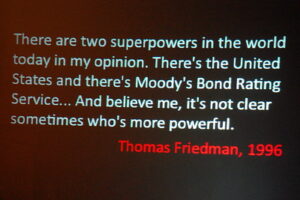Eastern Michigan University announced yesterday that it has adopted a block tuition structure. The change means that sixteen credit hours per semester will cost a full-time student the same as twelve credit hours. EMU will implement the new pricing model for the fall 2021 semester. Nine public universities in Michigan currently use block tuition. The hope is that the approach will reduce the time it takes students to complete a degree.
In theory, charging a full-time tuition rate that loosely relates to credit hours will encourage undergraduate students to graduate in four years. Compared to EMU’s current tuition model, the block tuition approach will save students nearly $4,000 on tuition costs. For students who live in university housing, it will also reduce those costs.
Generally speaking, a student can complete a bachelor’s degree in four years only by enrolling in at least 15 credit hours per semester. A simple per-hour tuition model, which EMU now uses, discourages students from taking more than the minimum full-time course load. This increases the time needed to complete a degree. It also increases the risk that the student will drop out, and increases the student’s need for financial aid.
Community colleges don’t typically use block tuition models, but a similar strategy could counter enrollment declines. Based on WCC’s reported number of credit hours and headcount, the average student takes about two classes per semester. Increasing the number of credit hour enrollments has the same effect as enrolling more students. The simplest way to increase credit hour enrollment is to incentivize students to take more classes.
Other incentives could substitute for block tuition
Incentives could work in several ways. For example, WCC could cap its technology fee at $100 per semester for full-time students. A student who enrolls in 15 credit hours would save $50 dollars per semester over the current per-credit hour tax. Similarly, if a part-time student enrolled in three classes in one semester, WCC could waive the technology fee on the 3rd class. That might only save the student $30, but it would net WCC an additional $285 on a 3-credit class. It would also move the student closer to graduation and increase the number of credit hours WCC delivers annually.
Another incentive might offer a first-time student a 3-credit tuition-and-fee waiver. The college could also use a similar incentive to re-enroll students who have dropped out. Giving these students one free class might entice them to finish the degree they previously started. Full-time students who take more than 15 credits per semester, or part-time students who take more than 8 credits per semester could earn tuition credits that they can use toward an advanced certificate after they graduate.
To encourage COVID-19 vaccination, offer a $50 tuition credit for vaccinated students who enroll in in-person classes.
Conventional block tuition plans likely won’t work well for community college students because of the demands on their time. However, WCC could still create financial incentives that encourage students to remain enrolled and complete more credits each semester.
Photo Credit: COD Newsroom, via Flickr






















